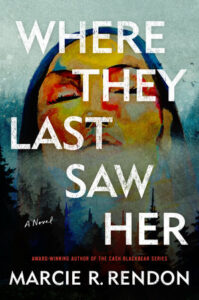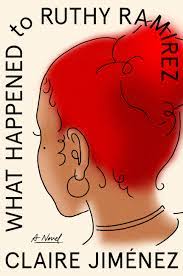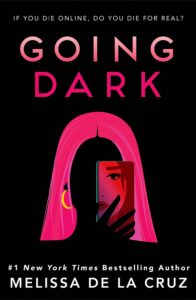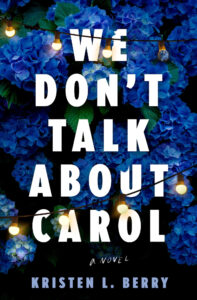During the darkest days of the early COVID pandemic, I spent many of my socially-distanced neighborhood walks listening to true crime podcasts. It was through those podcasts that I learned of the disturbing discrepancies when it comes to the way cases of missing people of color are often treated in the United States. For example, Black Americans are going missing at a disproportionately high rate, yet our cases are less likely to be covered by the media, and are also less likely to be solved.
This inspired me to write my debut novel, We Don’t Talk About Carol, which explores one woman’s quest for answers about six Black girls from Raleigh, North Carolina missing since the 1960s. I think fiction is a powerful tool for creating awareness and building empathy for the experiences and challenges of others. By humanizing this very real problem through an emotionally fraught and suspenseful story, I hope to shed more light on this issue, and maybe open a few hearts along the way.
Fortunately, this topic is beginning to gain increasing public attention, thanks in part to the tireless work of organizations such as the Black and Missing Foundation, a non-profit dedicated to bringing awareness to this issue and providing support and resources to those searching for their missing loved ones. Additionally, there have been several excellent novels published in recent years that underscore the ongoing epidemic of missing women and girls of color in America, such as the examples below.

Jackal, by Erin E. Adams
As I prepared for my very first conversation with my editor at Bantam/Penguin Random House, the wise and brilliant Jenny Chen, I was thrilled to learn that she previously edited Jackal, a debut horror novel that powerfully and thoughtfully explores the real-life horrors of racial injustice, particularly when it comes to missing Black girls. Given the strength of this book, I knew my novel would be in excellent hands with Jenny.
In Jackal, a young Black woman, Liz Rocher, reluctantly returns to the predominantly white Rust Belt down she grew up in to attend her best friend’s wedding. But when her friend’s daughter vanishes during the ceremony, she’s reminded chillingly of another Black girl who disappeared under similar circumstances when Liz was in high school. As Liz begins to delve deeper into her hometown’s history, she learns that Black girls have gone missing in those woods for years. This novel is a heart-pounding, supernatural thriller, but it’s also a thought-provoking social commentary.

Missing White Woman, by Kellye Garrett
Kellye Garrett’s novel Missing White Woman explores the all-too-common phenomenon known as “missing white woman syndrome,” a term for the disproportionate focus of press coverage, community attention and law enforcement effort on missing white women when compared to the treatment of missing women of color. In this page-turning thriller, the story’s protagonist, Breeana, wakes during a vacation to discover that a recently missing dog walker is dead in the entryway of the rowhouse she and her boyfriend are staying in, and that her boyfriend is nowhere to be found. Garrett brilliantly weaves an examination of race, privilege and bias into a twist-filled and propulsive tale.

Where They Last Saw Her, by Marcie R. Rendon
Indigenous women in America are also going missing at an alarmingly high rate, and indigenous women and girls face disproportionately high rates of violence. Marcie R. Rendon’s novel Where They Last Saw Her illuminates these disturbing issues through one woman’s search for a missing member of a fictional Minnesota reservation. The story’s protagonist, Quill, is out for a run in the woods when a woman’s scream reverberates against the trees. Quill searches the area the sound originated from, but all she finds is a single beaded earring. When a second woman vanishes from the community, Quill is determined to take action, and embarks on a quest that challenges her marriage, the safety of herself and those she loves, and the troubling phenomenon of bystander culture.

What Happened to Ruthy Ramirez, by Claire Jiménez
In a debut novel that is as hilarious as it is heartbreaking, Jessica Ramirez is watching a reality TV show when she is shocked to see a familiar face: that of her long-lost sister, Ruthy, who vanished from track practice at the age of thirteen, twelve years earlier. Jessica, her younger sister, Nina, and their mother Dolores embark on a family road trip to track Ruthy down, and are forced to reckon with their past along the way. The novel contextualizes the disappearances of women and girls of color as being far more than sobering statistics, underscoring that each number represents a person, and a family—all worthy of our empathy and attention.

Speaking of Summer by Kalisha Buckhanon
When Summer Spencer vanishes from the roof of a Harlem brownstone one winter evening, her twin sister, Autumn, soon becomes consumed with an effort to find her. Given the frequent indifference of local authorities to the cases of missing Black women, Autumn takes the search into her own hands, and risks losing herself in the process. Speaking of Summer is both a gripping psychological thriller, and a moving portrait of grief and survival.

Going Dark by Melissa de la Cruz
Going Dark is a thrilling new adult mystery that follows what happens when a social media influencer disappears while traveling with her boyfriend in Italy. A hacker is hired to uncover clues about the missing influencer as the hashtag #WhereIsAmeliaAshley goes viral, and soon, the case of another missing girl comes to light. Except that when Mignon Lee disappeared two years earlier, her case received little media attention or law enforcement effort, and no trending hashtag. Through a fast-paced and engrossing story, Melissa de la Cruz’ novel examines how our society decides who is worthy of a search, and who is left to vanish without a trace.
***














